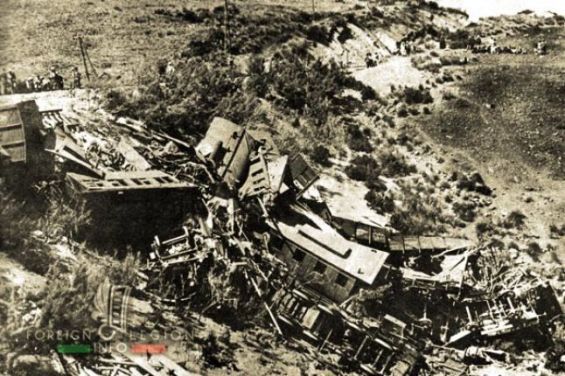The shared past of Morocco and Algeria witnessed in 1932 one of the deadliest train accidents in the history of the French Foreign Legion. The tragic crash took place in northwest Algeria but was connected to the situation in the Kingdom, where France was conducting a pacification campaign.
Heading to Oujda, the train that was carrying five hundred Legionnaires run off trails killing more than 60 people, including French soldiers and the train’s crew. Finalizing pacification in Morocco «the Legion had three of its regiments stationed there», recalled French Legion Info, a platform dedicated to the organization.
Morocco's pacification
«Other battalions were deploying regularly from Algeria to Morocco as reinforcement by the 1st Foreign Regiment», added the same source.
Indeed, during that period the French Foreign Legion maintained military bases in several locations across North Africa and troops made train trips between Algeria and Morocco to fulfill their mission in the two neighboring countries.

The infamous train crash took place during these circumstances, according to the book of Edgar A. Haine, «Railroad Wrecks» (Associated University Presses, 1993). «On 14 September 1932 a military train, carrying officers and members of the famous organization, were traveling from Sidi-bel-Abbes to Oujda», he wrote.
Describing the deadly crash, Haine explained that in the mountainous region between Zelboun and Turenne in Algeria the «train left the tracks and plunged two hundred fifty feet to the bottom of a ravine».
The train, composed of four passenger cars and locomotives, killed 50 soldiers and injured 223 others, including the train’s staff.
The accident
In a different book entitled «The Americanization of France : Searching for happiness after the Algerian War» (Rowman & Littlefield Publishers, 2013) historian Barnett Singer brings the death toll to «fifty-two comrades».
According to Haine, rescue operations after the accident were carried by the local population in Turenne. Later in the day, a «special relief train arrived, and General Paul Rollet, inspector of the Foreign Legion, took control», he added.
The injured were pulled from the «wreck» and they were transferred to Tlemcen while «rescuers worked all night to extricate wounded and dead», added the same book.

Following the accident, an investigation was opened to determine the causes that led to the tragic. Its results suggested that «the derailment was caused by a mushy roadbed that had been undermined and deteriorated by the heavy rains», recalled Haine.
The railway linking the French military location in Sidi-bel-Abbes and Oujda was heavily affected by the accident as locations near to spot where the crash took place «had been damaged».
Another crash in Morocco
Meanwhile in Morocco, the tragic crash came as French Legionnaires emerged victorious from a battle they fought against the Ait Sekhman tribe in the Atlas. On September the 10th, only four days before the accident, the local resistance was defeated by the French who conducted a pacification campaign in the Kingdom.
Years later, the Meknes region was home to one of the country’s deadliest train accidents. This time, the passengers were Moroccan soldiers who participated in World War II alongside the French.

The crash took place on the 24th of June 1945 in Ouarzigha, near Meknes. According to Jeune Magazine, 228 soldiers died in the crash while several others were wounded.
Most recently, 7 people and 125 others were injured when an ONCF train derailed, Tuesday 16th of October, near Bouknadel, a city situated slightly to the north of Rabat and south of Kenitra.





 chargement...
chargement...













